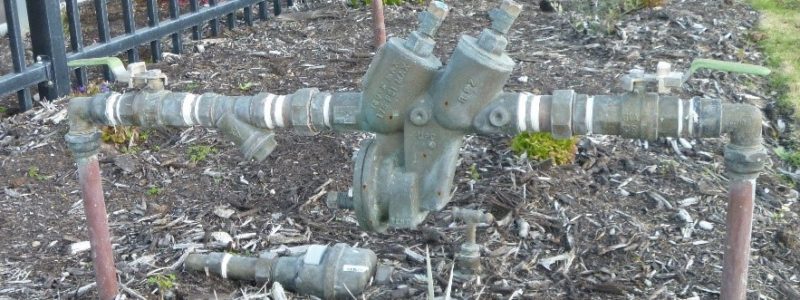
Government Involvement in Backflow Prevention Policy
Service providers usually determine their own backflow prevention requirements to protect their water supply system, but check with government offices in your State and the appropriate regulations to clarify specific responsibilities.
AS/NZS 2845.1 Water Supply – Backflow prevention devices – Materials, design and performance requirements
AS/NZS 3500.1 Plumbing and drainage – Water Services
All properties connected to the public water supply system must be assessed to determine the level of the hazard the property presents to the water supply system. Australian Standard 3500.1 has the following hazard rating system:
High Hazard – Any condition, device or practice in connection to a drinking water supply system has the potential to cause death.
Medium Hazard – Any condition, device or practice in connection to a drinking water supply system has the potential to endanger health.
Low Hazard – Any condition, device or practice in connection to a drinking water supply system constitutes a nuisance but does not endanger health.
This section summarises the relevant Standards, Guidelines and Legislation associated with backflow prevention.
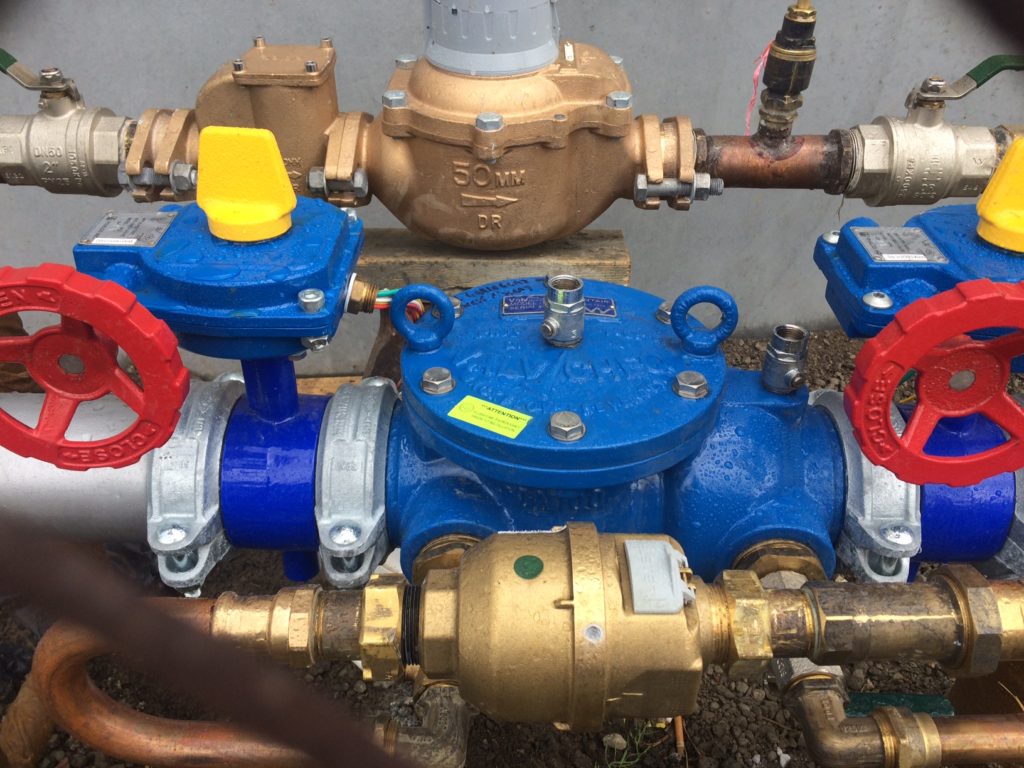
The Water Supply and Sewerage Services Act (WSSSA)
The objects of the Act are:
- To promote the safe and efficient provision of water supply and sewerage services.
- To establish and enforce standards of service in water supply and sewerage services.
- To facilitate the provision of financially viable water supply and sewerage services; and
- To protect the interests of customers.
There are sections within the WSSSA that are relevant to the implementation of backflow prevention. The first relates to the potential pollution of the water supply. The second relates to the specific cause of pollution via cross-connection allowing the potential for backflow. The third relates to circumstances where a backflow hazard may or does exist.
Section 99 of the Act states:
A person must not pollute with any substance a reservoir, dam, reservoir or dam catchment area, groundwater recharge area, bore, borefield, aqueduct, water storage tank or infrastructure that is used or constructed to hold or supply water for human consumption.
Section 92 of the Act states:
- A person must not:
- cause or permit an indirect cross-connection to a licensee’s water supply infrastructure except in accordance with the National Plumbing and Drainage Code; or
- cause or permit a direct cross-connection to a licensee’s water supply infrastructure except with the written approval of the licensee.
Cross connection is defined as “a connection to the PWC potable water supply from an alternative water supply that may enable non-potable water and other substances to enter the drinking water system”
Section 44 (1) of the Act States:
“Despite anything in the Act, a licensee does not have an obligation to connect or supply water supply or sewerage services to a customer’s premise if the connection or supply is, or needs to be, interrupted –
(e) after disconnecting a connection that created a hazard – if the connection remains a hazard:”
Australian Drinking Water Guidelines
These Guidelines are published by the National Health and Medical Research Council and provide an authoritative reference for safe, good quality water, how it can be achieved and how it can be assured. The Guidelines are concerned with safety from a health perspective and with aesthetic quality. The Guidelines require backflow prevention policies to be applied and monitored as a preventative measure to maintain the integrity of the system and to protect water quality.
To ensure the protection and maintenance of the distribution system the Guidelines state:
“Water distribution systems should be fully enclosed and storages should be securely roofed with external drainage to prevent contamination. Backflow prevention policies should be applied and monitored. Also, there should be effective maintenance procedures to repair faults and burst mains in a manner that will prevent contamination. Positive pressure should be maintained through the distribution system. Appropriate security needs to be put in place to prevent unauthorised access to, or interference with, water storages.”
AS/NZS 2845.1
“Water Supply – Backflow prevention devices – Part 1: Materials, design and performance requirements”
This Standard specifies requirements for the design, performance and testing of backflow prevention devices, used for the protection of potable water.
AS 28454.2
“Water Supply – Backflow prevention devices – Part 2: Air gaps and break tanks”
This Standard specifies requirements for air gaps and break tanks used as backflow prevention devices for the protection of potable water supply.
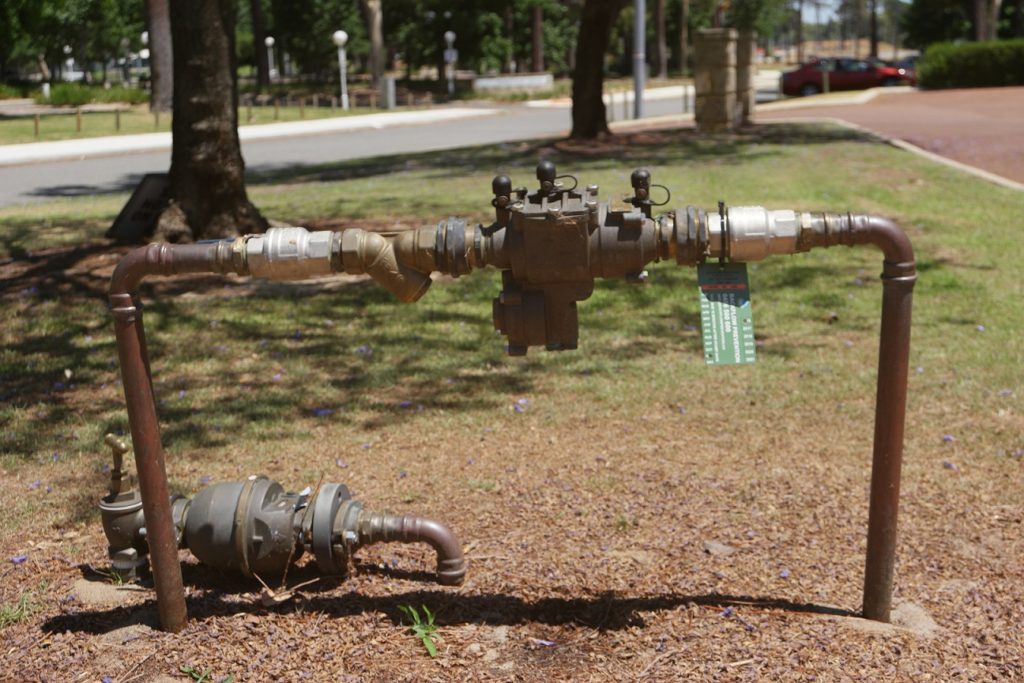
The Hunter Water authority has the policy to ensure they exercise their required duty of care for the protection of the drinking water supply system and the safeguarding of public health.
All customers connected to the Hunter Water’s drinking water supply system are affected by this policy.
The policy ensures that appropriate site containment backflow prevention devices are fitted to drinking water supply for the protection from unintended cross connection and backflow of contaminants into the drinking water supply system.
This policy applies to:
- Properties connected to the drinking water supply within the Hunter Water’s area must meet the site contamination backflow requirements of Australian Standard/NZS 3500 Plumbing and Draining Part 1 and the Plumbing Code of Australia.
- Customer’s responsibilities for the installation, maintenance and testing of site containment backflow prevention devices other than low hazard 20 and 25mm installations. Approved test certificates must be completed and forward to the authority each year.
- Where the customer fails to provide a test report, the Authority may engage an appropriately accredited tester to perform the work and charge it to the customer
- Customers who fail to meet the conditions as specified in a notice issued by the Authority, then the customer’s supply may be disconnected until the notice is complied with.
- Properties with a drinking water connection with a medium or high hazard rating must install and maintain appropriate backflow prevention devices under the Standard.
- Accredited persons only can determine the hazard rating of a property connected to the drinking water supply as per the Standard.
- Unknown Hazards at commercial, industrial or mixed development will result in a default to a high rating with appropriate devices fitted. The highest hazard rating will be applied to multiple tenants or processes with various hazard ratings.
- Premises which change their site containment hazard rating must install an appropriate backflow prevention device for the new use.
- Costs for any site contamination where a customer’s premise is unsatisfactory and he failed to comply, with a notice of same issued to the customer.
- The Authority maintains a register of all current testable site containment backflow prevention devices with annual test results.
- Customers provided with an alternative water supply (ie, recycled water) must install a site containment backflow prevention device on the drinking water supply system in accordance with the Standard.
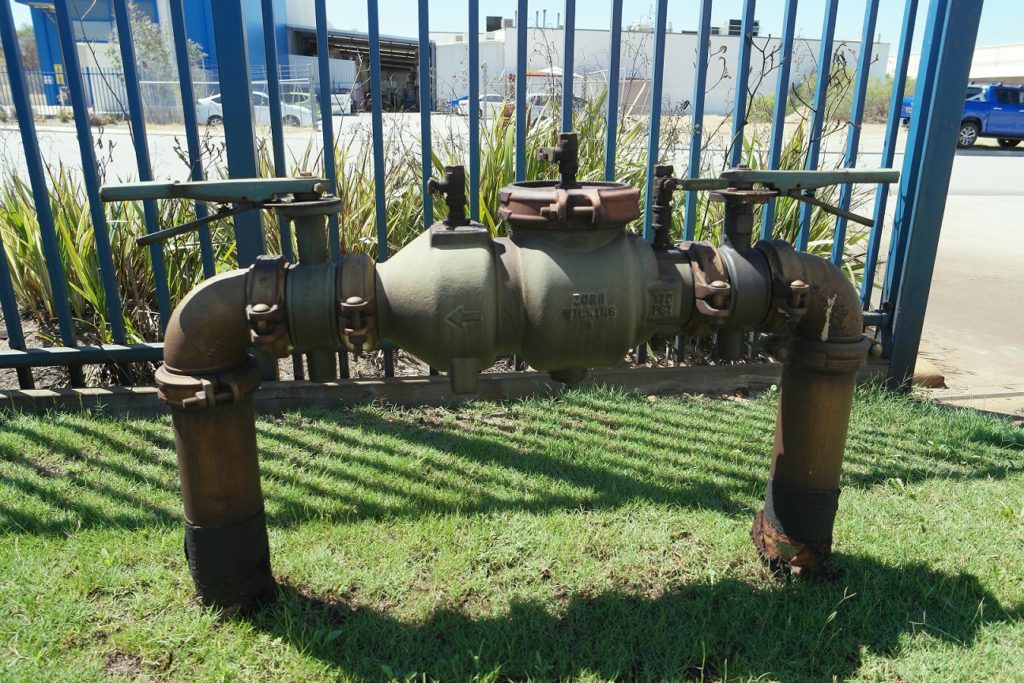
Power and Water Corporation (Northern Territory)
Connection Code Bulletin
The Power and Water Corporation in the Northern Territory has a Connection Code Bulletin on Backflow Prevention.
Power and Water Corporation is committed to providing safe drinking water (potable water) to their customers. Part of the process to providing safe drinking water involves analysing the various hazards to the safety of the water supply and ensuring that there are barriers to control or eliminate those hazards.
Serious risk exists in most major water supply systems with the possibility of backflow of contaminated water from hazardous sites into the potable water supply system. Backflow events in Australia and overseas have previously resulted in fatalities and serious cases of poisoning.
Protection of the potable water supply from backflow contamination and to ensure it is safe to, requires backflow prevention devices to be installed at the property boundary.
PWC’s Back Flow Prevention Policy and Backflow Prevention Manual specifies requirements for the installation, maintenance and testing of backflow prevention devices for new and existing services.
NT’s Power and Water Corporation Customer Handout No 7 provides a brief overview of the backflow requirements for government agencies, developers, consultants contractors, property owners, business owners and people involved in the water industry.
Require More Information?
Contact the Service Development Section of the PWC for a copy of their Connection Code and associated activities. Included is the asset creation process and Backflow Prevention Policy for the Corporation’s water supply and sewerage infrastructure. The Connection Code and
Backflow Prevention Manual internet pages are also available on their internet site.
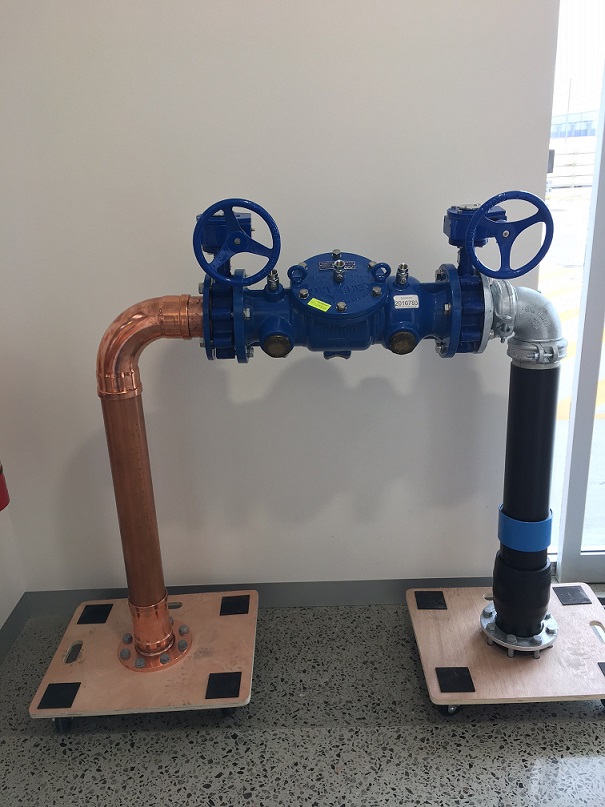
Power and Water Corporation (Northern Territory)
The domestic Power and Water Corporation (PWC) in the Northern Territory has a Backflow Prevention Policy that aims to provide good quality, safe and reliable drinking water; similar to many other States in Australia. This Backflow Prevention policy:
- Applies to all domestic properties connected to the water supply systems licenced under the Water Supply and Sewerage Services act in the NT.
- Provides for a ‘hazard rating’ of all properties connected to the water supply as determined under AS/NZS 3500.1. Hazard ratings are specified as High, Medium and Low.
- Ensures that properties with hazards that are rated as high or medium are required to supply and install an approved testable backflow prevention device (BPD) on the outlet side or downstream of the Power and Water meter supplying the property. Devices will be installed, maintained and tested as specified in AS/NZS 3500.1.
- Requires domestic properties with rainwater tanks, on-site bore pump supplies or greywater reuse systems that are connected to the PWC potable water supply to install backflow protection as specified in the PWC Backflow Prevention Manual.
- Requires manufacture and installation of BPD’s to comply with the relevant Australian Standards and Power and Water Backflow Prevention Manual.
- States BPD’s must be installed by a licenced plumber but must be commissioned and tested by a person with a backflow prevention accreditation.
- Obligates customers to supply the Power and Water authority with all details of testable BPD’s installed at the meter installation. Power and Water maintain these details in a backflow prevention database.
- Stipulates all testable devices installed at a property boundary shall be maintained in working order and tested for operation and function at intervals not exceeding 12 months. An approved Test Certificate Report needs to be completed and forwarded to Power and Water.
- Provides for the restriction or disconnection of supply where a customer fails to comply with the requirements of the Backflow Prevention Manual.
- Is regularly communicated to customers and industry stakeholders to ensure the requirements of the Backflow Prevention Manual are complied with.
Further information can be obtained from the Power and Water Corporation authority (PowerWater) in the Northern Territory on 8951 7312 (Southern Region) and 8995 5801 (Northern Region).
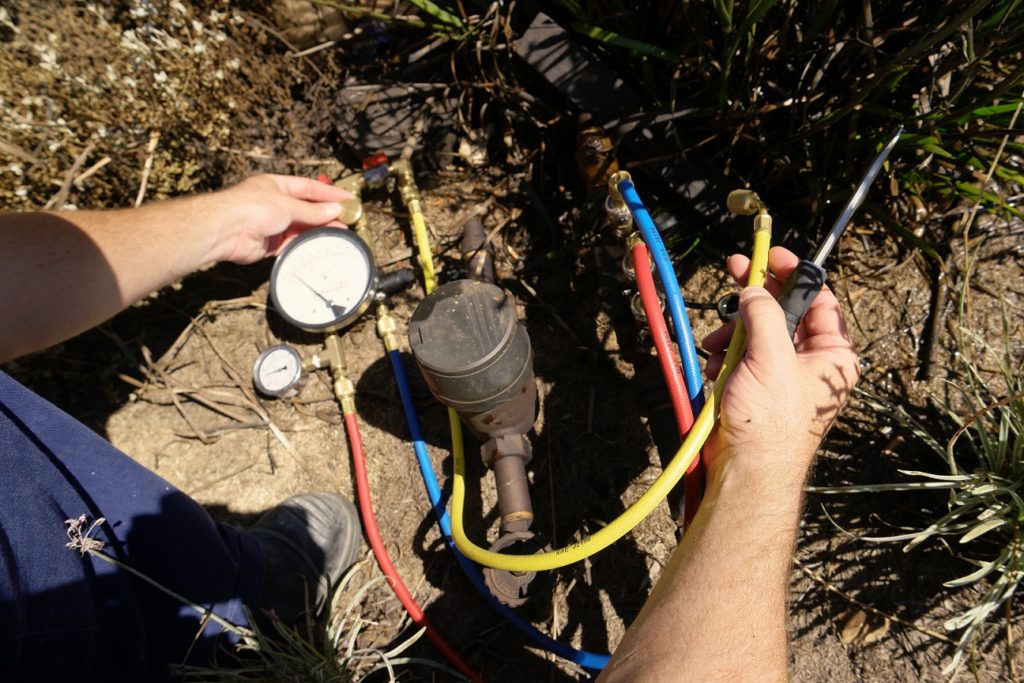
South Australian Backflow Prevention Requirements
The South Australian Government water, energy and environment authority has a concise backflow prevention requirement on their website. It follows the AS/NZS 3500.1 Standard, the national plumbing standard.
The Office of the Technical Regulator in the SA Government authority specifies the test report format required. The Commission Inspection and Maintenance Report is the form required and is online from their website. This is the only acceptable form and must be saved on your computer if you want to retain the data.
The completed report and the certificate of compliance must be sent to the Office of the Technical Regulator by the plumber within seven days. All fields are mandatory for completion with the Plumber’s, Gas Fitter’s or Electrician’s number quoted.
Mandatory information not included will have the report returned to the applicant.
The Office of the Technical Regulator in SA Water audits the test kits for backflow prevention. Because these kits are precision instruments they need to be treated with appropriate care. Hence the instruments need to be calibrated and certified every 12 months.
Backflow Prevention accredited Plumbers should consult the South Australian Government website on:
https://www.sa.gov.au/topics/water-energy-and-environment/electrical-gas-and-plumbing-safety-and-technical-regulation/plumbing-trades/plumbing-installations/backflow-prevention-requirements
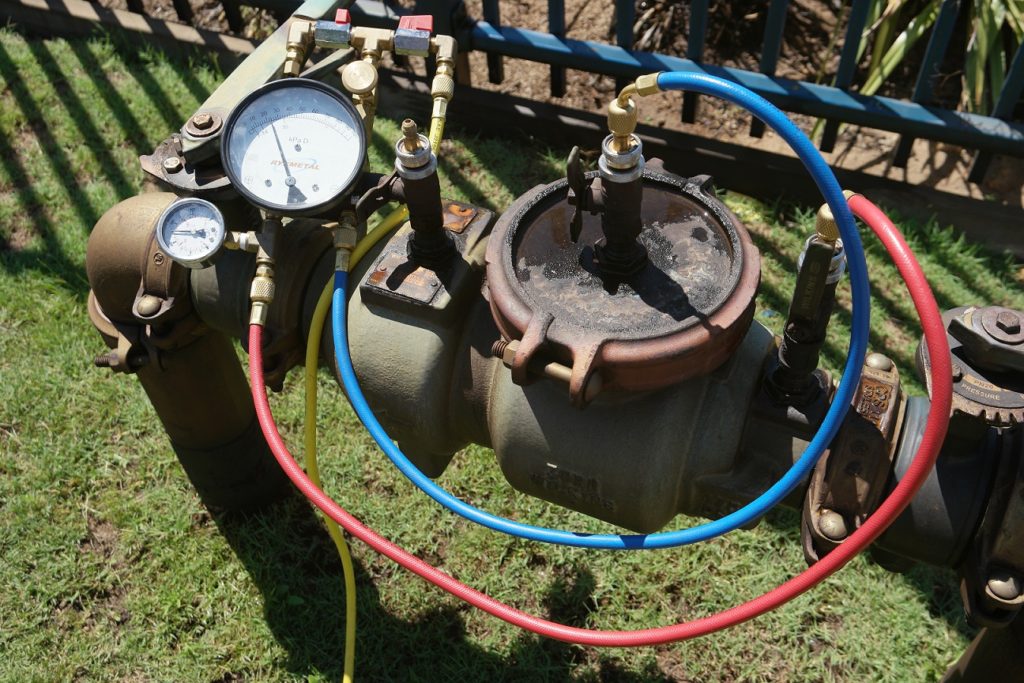
South Australian Water Connections
The Office of the Technical Regulator Plumbing (OTR) manages backflow prevention to meet the AS/NZS3500 Plumbing and Drainage Standards. For further information visit www.sa.gov.au/otrplumbing or call OTR on 1300 760 311. The information in provides an overview of SA Water and customer obligations to protect the public water supply.
20mm metered water connections
For new water connections, or when alternate water supplies have been reticulated to or within the property, the owner of the property, or responsible entity, must engage a qualified contractor to assess the proposed use and potential hazard level of the proposed on-site activities, in compliance with AS/NZS3500.1 (eg, low, medium or high hazard).
Based on the assessed hazard rating, a suitably rated backflow prevention device must be installed immediately downstream of the drinking water connection. The device will need to be supplied and installed by a licensed plumber.
SA Water’s new 20mm drinking water meters contain a low hazard (containment) backflow prevention device (dual check valve) installed in the meter assembly.
25mm and larger water metered connections
For drinking water connections 25mm or larger a plumber must assess the hazard rating of onsite activities and install a suitably rated backflow prevention device. The backflow prevention device needs to be situated at the property boundary adjacent to the water meter.
For maintenance and testing purposes, isolation valves must be located either side of a testable backflow prevention device. A line strainer is also required to be installed upstream of the device (except on fire service installations). Isolation valves installed on services of 80mm and larger must be gear activated.
Existing property water connection
The hazard rating and backflow prevention requirements for a property may change if another water supply is present or there is a change in the onsite activity. The level of protection will need to be Assessed by a licensed plumber
Fire Hydrants or sprinkler services
Fire services must have a single spring-loaded testable check valve with certified resilient seated gear activated isolating valves installed on either side of the check valve to permit maintenance and testing. The valve must be installed on the internal pipework within 3 metres of the property boundary in accordance with plumbing installation standards.
Fire hose reels may also require backflow protection dependent on the risk rating as assessed by the plumbing contractor or qualified person.
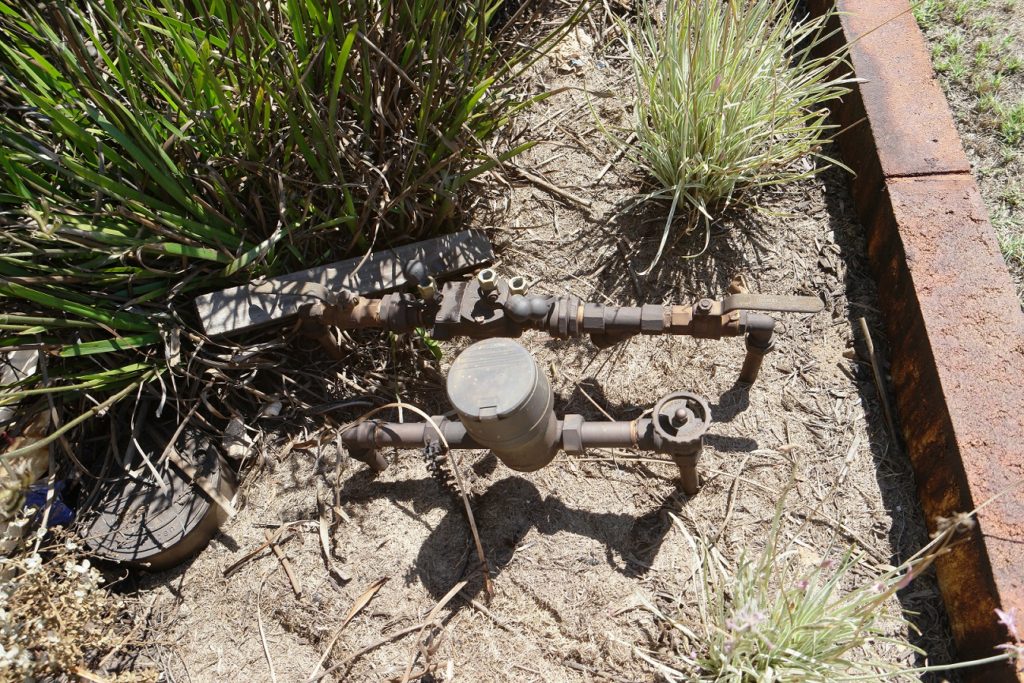
Builders and Developers – Backflow Prevention Source of info Water Corp WA
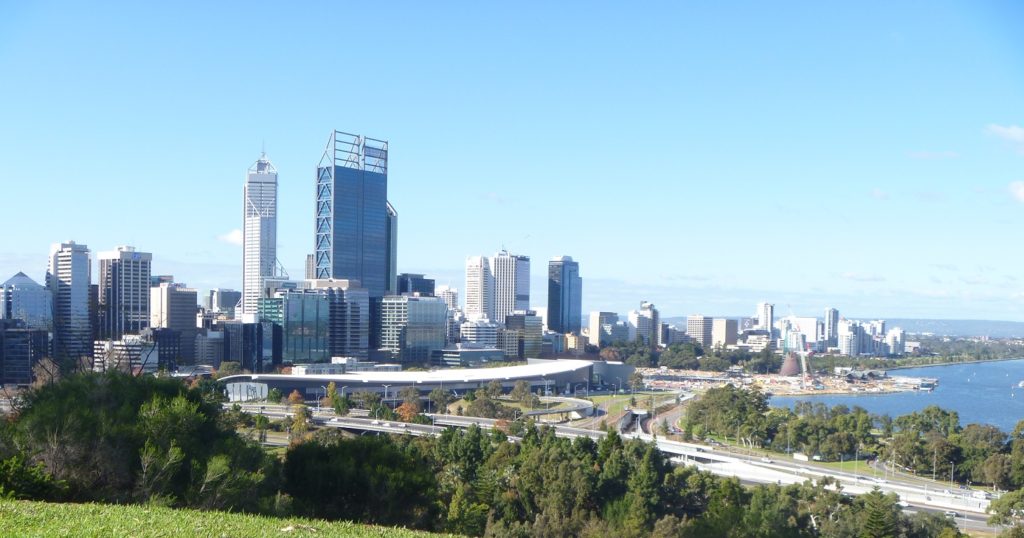
Backflow Prevention is required for all builders and developers. The installation of an approved backflow prevention containment device at the boundary of every water service connection to a property (including fire services) is specified in Australian/New Zealand Standard 3500.1.
It should be noted that fire services installed before May 2010 were not required to have installed a boundary device unless the fire service was being altered at the property boundary.
Backflow – What is it?
The reversal of the normal direction of water flow in a water supply plumbing system is called backflow. This occurs as the water delivery main is at a lower pressure than the internal plumbing system (back siphonage). This can occur where there is a burst or rupture in the water main, due to excessive demand during fire-fighting or other high demand situations.
If a bore pump is cross-connected to the internal water plumbing system and the pump is at a higher pressure than the water mains pressure, a backflow can also occur.
Another instance of backflow can be where a property drinking water supply is inadvertently connected with a source of pollution allowing these pollutants to enter the drinking water. The overpressure at the private property side (for instance a swimming pool) forces the pollutant into the lower pressured drinking water supply.
Do You Need to Install a Backflow Prevention Device?
Everyone has the right to clean uncontaminated water. Contaminated water can be the result of a backflow incident and can cause health problems or even death. Legislation requiring the installation of backflow prevention is:
- Water Services Act 2012
- Water Services Regulations 2013
Regulations exist with penalties of up to $5,000 and $500 per day for incidents where the need to fit backflow prevention devices have not been complied with.
Offences can also result in the restriction or disconnection water services. The protection of the drinking water supply is paramount.
Backflow Prevention Devices should be fitted when?
Normally applications to build include an assessment for backflow prevention at the time of application. But you should check yourself that this assessment has been included.
The types of building applications which normally include a backflow prevention check are:
- When additions or alterations to an existing water service is proposed.
- Where commercial or multiple residential buildings are proposed.
- Where existing facilities are redeveloped.
- For all new developments
- Where the minimum water service size applied for is greater than 25mm.
- Fire Service applications
By who?
Licenced plumbing contractors with appropriate accreditation are the only persons who can install backflow prevention devices.
Risk Ratings for backflow
The three classes of backflow risk are low, medium or high as per AS/NZS 3500.1:2015.
Low Risk – where the water supply system poses a nuisance but does not endanger health or cause injury.
Medium Risk – where the water supply system could endanger health.
High Risk – where the water supply system could cause death.
Risk Determination
The rating for risk of backflow is normally advised at the time the building development application is approved. The final risk rating may be determined by the activity of a specific site survey.
Builders or developers who have been advised at the time of application of the backflow risk rating should advise the owners or occupiers of their property’s initial backflow risk rating if customers are unsure of the rating process.
Wish to appeal the backflow risk rating?
If you feel the risk rating for your property is higher than site-specific activities carried out you may appeal that rating.
You can use an independently suitably qualified licenced plumbing contractor or hydraulic consultant and lodge an appeal to the Water Corporation.
Who is responsible for installing a backflow device?
If a building does not have a backflow prevention device installed it is the owner’s or occupier’s responsibility to ensure one is installed. Check your risk rating and arrange to have an appropriate backflow prevention device installed.
All backflow prevention devices are fitted at the boundary of a property rated high or medium risk.
Backflow Prevention Devices are checked annually

